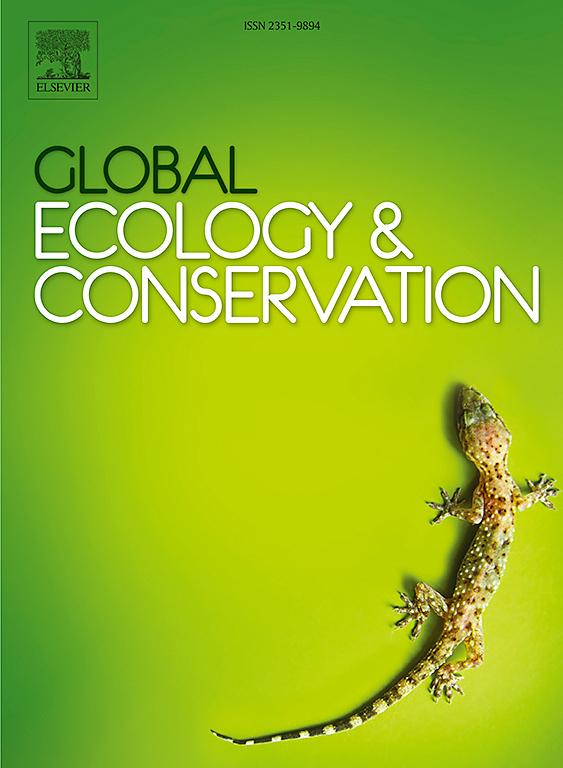Spring drought delayed the stem growth resumption of four broadleaf species in a subtropical forest of China
IF 3.4
2区 环境科学与生态学
Q1 BIODIVERSITY CONSERVATION
引用次数: 0
Abstract
Adverse effects of frequent extreme drought events on forest growth have been widely reported. Previous studies primarily focused on boreal forests and temperate forests. However, it is unclear how drought affects the cambium phenology and growth rate of trees, particularly subtropical broadleaf trees. Vaganov-Shashkin (VS) models based on tree-ring chronologies were used to simulate cambium phenology data of 4 tree species (Liquidambar formosana, Camphora bodinieri, Choerospondias axillaris, and Machilus nanmu) from 1984 to 2017, and the response of cambium phenology and growth rate to spring drought was studied. The study found no significant changes in cambium phenology and growth rate between 1984 and 2017. Stem recovery was significantly delayed in all species 1–2 years after drought. Only the cumulative growth rate of C. axillaris decreased significantly in the drought year, and drought had no carryover effect on the cumulative growth rate of all tree species. This consistency was primarily due to the higher resistance and recovery. Although individual spring drought events have a delayed effect on cambium phenology, high resilience ensures that all tree species return to pre-drought levels within 2 years after the drought. This study provides an indispensable scientific benchmark for the adaptive management of global subtropical forests, holding profound significance for sustaining the Earth's critical ecosystem services.
春季干旱延缓了亚热带森林四种阔叶植物茎的恢复生长
频繁发生的极端干旱事件对森林生长的不利影响已被广泛报道。以前的研究主要集中在北方森林和温带森林。然而,干旱如何影响树木,特别是亚热带阔叶树的形成层物候和生长速度尚不清楚。采用基于年轮年代学的Vaganov-Shashkin (VS)模型,模拟了1984 ~ 2017年4个树种(枫树、香樟、小叶樟和南木)形成层物候特征,研究了形成层物候特征和生长速率对春旱的响应。研究发现,1984年至2017年间,形成层物候和生长速度没有显著变化。干旱后1 ~ 2年茎秆恢复明显延迟。在干旱年,只有腋窝杉木的累积生长率显著下降,干旱对所有树种的累积生长率没有结转效应。这种一致性主要是由于较高的阻力和恢复。尽管个别春季干旱事件对形成层物候有延迟影响,但高恢复力确保所有树种在干旱后2年内恢复到干旱前的水平。该研究为全球亚热带森林适应性管理提供了不可或缺的科学基准,对维持地球关键生态系统服务具有深远意义。
本文章由计算机程序翻译,如有差异,请以英文原文为准。
求助全文
约1分钟内获得全文
求助全文
来源期刊

Global Ecology and Conservation
Agricultural and Biological Sciences-Ecology, Evolution, Behavior and Systematics
CiteScore
8.10
自引率
5.00%
发文量
346
审稿时长
83 days
期刊介绍:
Global Ecology and Conservation is a peer-reviewed, open-access journal covering all sub-disciplines of ecological and conservation science: from theory to practice, from molecules to ecosystems, from regional to global. The fields covered include: organismal, population, community, and ecosystem ecology; physiological, evolutionary, and behavioral ecology; and conservation science.
 求助内容:
求助内容: 应助结果提醒方式:
应助结果提醒方式:


